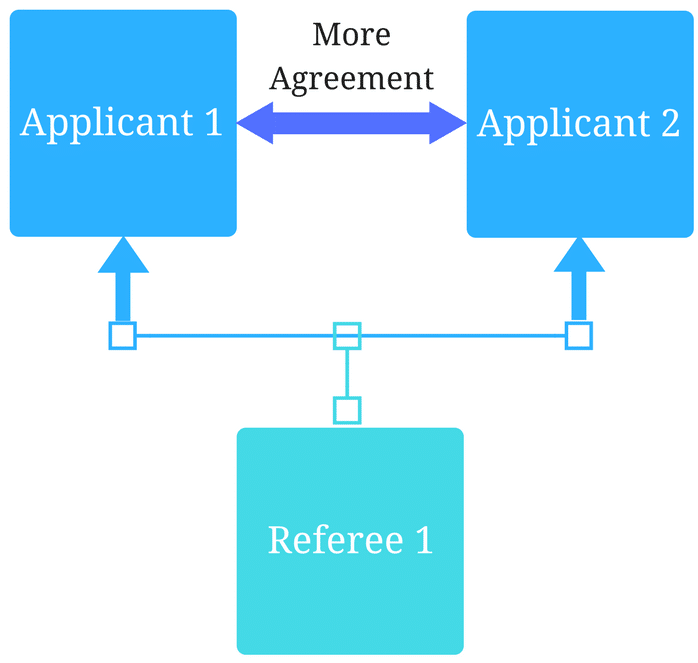Automating MSPE letter generation

November 2, 2021
Considerations and best practices
Many medical schools are looking at ways to alleviate the pain of MSPE generation by centrally accessing required data points to automate draft letters. Streamlining this process can save a huge amount of time, reduce errors, and provide the opportunity to improve results for students and programs.
For the sake of simplicity in this article, we will reference the use of our own Analytics product which includes a data warehouse and an application built specifically to batch draft and automatically update MSPE letters on a medical school’s letter template. The core principle covered here also extends to internally built data warehouses and custom applications.
Curious how your program can automate MSPE letter generation? Learn more
Step 1: Consider all the data sources you need
For ease of use, customers should be set up for MSPE success to ensure we are collecting data in a way that can be consumed by our Analytics data warehouse. At a high level, we need:
- Demographic data
- Admissions data (aka Matriculation data)
- Course grades and narratives (aka learner grades)
- Clerkship grades and narratives (aka learner grades)
- Gateway exam scores (Step 1, Step 2)
- In-course exam scores (NBME subject exams)
Clinical grades and narrative comments come from One45 or another system such as Oasis, while the One45 Analytics team focuses on syncing or importing the other data sets required.
Step 2: Ensure you have a complete data set in source systems
Demographic and academic info
- Student names
- Grad years
- Special programs
- Gaps and leaves
- Remediations
- Adverse actions
- Commendations and honors
Course data
- Not all schools include course details in their MSPEs so this detail may not be required.
- If you are using individual course grades and/or course narratives, the assessment form(s) and gradesheet(s) used to collect this data will need to be identified.
- If you do not import narrative comments directly into Analytics, a process to pull those comment fields in will need to be created. The best case scenario is to use a comment field in the gradesheet specifically for MSPE that can be tagged for Analytics. Often there is a field on forms which identifies the narrative fields that will be included for the MSPE process with some form of language, such as “These comments are for the Dean’s Letter and will be included in the MSPE as-is.”
Clerkship data:
- All schools include clerkship names, clerkship grades, and clerkship narratives, but there are also rotation dates, subject exam scores, and grades breakdowns for many.
- Many schools include performance graphs on their MSPE letters to show a learner’s grades in relation to their classmates. This can be complex with off-cycle students, unique chronological order for each student, understanding how you approach the performance graphs can make recreating them automatically in Analytics easier to accomplish.
- While most schools have a standard set of clerkships, some schools include additional electives that may need to be treated similarly to include the final MSPE.
Remediation process:
- If possible, we recommend implementing a Remediated Pass (RP) grade system in non-SIS systems for reporting individual and cohort performance, as well as MSPE.
- Many schools tend not to track remediation steps and scores in systems of record. By capturing remediation scores through your institution’s grade book, your school is able to identify all students who remediate an exam, quiz, and/or overall course. Schools can use remediation tracking to identify low-performance thresholds, monitor failures, track trends over time, and more.
- Having the remediation history, including previous attempts and historical scores, gives institutions a clearer picture of learner and program needs, allowing them to act before they become a concern.
- With the requisite data, schools can identify and address patterns early. By automating the process of adding remediations into the grade book, you can easily identify, across courses and years, which students remediated, the types of remediation, and more. This can be used to segment population groups to identify characteristics of potentially at-risk learners for student success teams to provide early support.
Step 3: Validation of data
When starting your MSPEs for the next cohort, it is important to ensure that your fields are mapped correctly prior to generating the draft letters. If you are using One45 Analytics, you can do this simply by navigating to the MSPE Assist Dashboard to validate the following key information:
- Validate your student list is complete
- Verify admissions data is correct (gender, entry year, degree programs, special programs)
- Take note of students whose letters may need extra work:
- Dual degree programs
- Gaps/leaves
- Remediations
- If updates are required:
- For demographic info, admissions, matriculation, and grades > update in the source system to ensure your data is always in alignment
- Other data > update as needed in the student letter
Step 4: Get set to generate your MSPE letters
With data centralized and normalized in a data warehouse and your medical school’s MSPE letter template entered in the One45 MSPE builder, the annual MSPE process doesn’t need to be the giant effort you’re used to. With the power to generate a full batch of draft letters with all the necessary data in minutes, not months, your team can redirect time and effort to level up the personalization of letters in support of your students. Learn more about how One45’s data warehouse and MSPE module can enable you to direct additional focus on adding the personal touches that lead to the best success rates for your learners.
[cta cta_id=”16105″]
Related Articles

How interviews could be misleading your admissions...
Most schools consider the interview an important portion of their admissions process, hence a considerable…
Reference letters in academic admissions: useful o...
Because of the lack of innovation, there are often few opportunities to examine current legacy…
